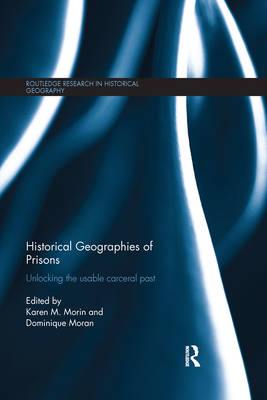
- Afhalen na 1 uur in een winkel met voorraad
- Gratis thuislevering in België vanaf € 30
- Ruim aanbod met 7 miljoen producten
- Afhalen na 1 uur in een winkel met voorraad
- Gratis thuislevering in België vanaf € 30
- Ruim aanbod met 7 miljoen producten
Historical Geographies of Prisons
Unlocking the Usable Carceral Past
Omschrijving
This is the first book to provide a comprehensive historical-geographical lens to the development and evolution of correctional institutions as a specific subset of carceral geographies. This book analyzes and critiques global practices of incarceration, regimes of punishment, and their corresponding spaces of "corrections" from the eighteenth to twenty-first centuries. It examines individuals' experiences within various regulatory regimes and spaces of punishment, and offers an interpretation of spaces of incarceration as cultural-historical artifacts. The book also analyzes the spatial-distributional geographies of incarceration, particularly with respect to their historical impact on community political-economic development and local geographies. Contributions within this book examine a range of prison sites and the practices that take place within them to help us understand how regimes of punishment are experienced, and are constructed in different kinds of ways across space and time for very different ends. The overall aim of this book is to help understand the legacies of carceral geographies in the present. The resonances across space and time tell a profound story of social and spatial legacies and, as such, offer important insights into the prison crisis we see in many parts of the world today.
Specificaties
Betrokkenen
- Uitgeverij:
Inhoud
- Aantal bladzijden:
- 248
- Taal:
- Engels
- Reeks:
Eigenschappen
- Productcode (EAN):
- 9780367668778
- Verschijningsdatum:
- 30/09/2020
- Uitvoering:
- Paperback
- Formaat:
- Trade paperback (VS)
- Afmetingen:
- 156 mm x 234 mm
- Gewicht:
- 353 g

Alleen bij Standaard Boekhandel
Beoordelingen
We publiceren alleen reviews die voldoen aan de voorwaarden voor reviews. Bekijk onze voorwaarden voor reviews.










